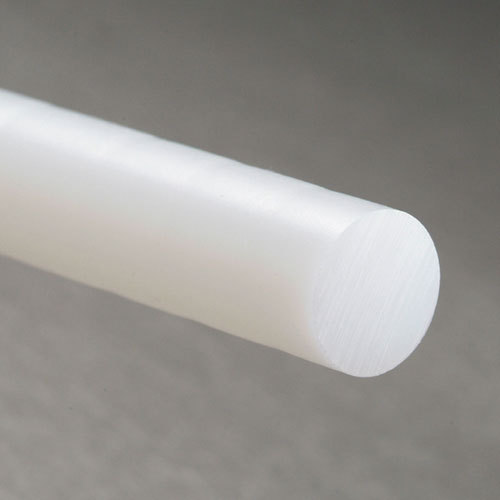#materialcharacterization
Explore tagged Tumblr posts
Text

Polymer Testing
Tamilnadu Test House offers a wide range of testing in polymers to measure its physical and mechanical characterization, thermal characterization, rheological characterization and its optical properties
#tamilnadutesthouse#testhouse#testinglabs#NDTservices#nondestructivetesting#laboratorychennai#laboratoryTamilnadu#laboratorytestingserviceschennai#testingservicesTamilnadu#polymertesting#polymercharacterization#polymeranalysis#polymerpropertie#polymermaterials#materialtesting#materialcharacterization#materialsscience#plastics#engineering#qualityassurance#research#innovation#science#technology
0 notes
Text
Technical Textile in Material Characterization
In the world of textiles, innovation is the name of the game. Technical textiles, designed for their unique properties and functions, have opened up a realm of possibilities in industries ranging from healthcare to aerospace. But what lies beneath the surface of these remarkable materials? That's where material characterization comes into play.
Material characterization is the key to unlocking the true potential of technical textiles. It allows us to delve deep into the material's properties, from its porosity to its permeability, and even its surface area. Armed with this knowledge, we can engineer textiles that are not just functional but optimized for specific applications.
At Material Intelligence Lab, we're passionate about exploring the intricacies of technical textiles. Our state-of-the-art instruments and cutting-edge techniques enable us to analyze these materials at a microscopic level. By understanding their composition and behavior, we can fine-tune technical textiles to meet the exacting demands of various industries.
But it's not just about the science; it's about the impact. From designing advanced filtration systems for clean air and water to creating protective gear for frontline heroes, material characterization in technical textiles paves the way for innovation that changes lives.
#MaterialCharacterization#TechnicalTextiles#Innovation#MaterialScience#MaterialIntelligenceLab#ExploreTheScience
0 notes
Text
Ultra-High Molecular Weight Polyethylene: Major Things to Understand
Ultra-high molecular weight polyethylene (UHMWPE) is a distinctive thermoplastic polymer with remarkable mechanical and physical qualities. It is polyethylene with the same molecular as regular polyethylene. However, it has a higher molecular weight than polyethylene, which is commonly used. In this blog, let’s understand the major things.
People are living longer lives, particularly in emerging countries such as China and Japan, which are increasing requirements for medical services and UHMW implants. As a result of its advantageous characteristics and tensile strength. Many industries use it significantly, including electronics, automotive, industrial, and heavy equipment. As a result, these factors are anticipated to boost the market. In addition, according to a research report by Astute Analytica, the Global Ultra-High Molecular Weight Polyethylene Market is likely to rise at a compound annual growth rate (CAGR) of 14.7% over the forecast period from 2023 to 2031.
How are UHMWPE products made?
Polymerization:
The polymerization process is carried out at lower temperatures (66-90 °C) and pressures (0.4-0.6 MPa) utilizing a Ziegler-Natta catalyst, namely tri ethyl-aluminum (Al(C2H5)3) and titanium chloride (TiCl4). Polymerization occurs in a solvent, which is a mixed system containing ethylene gas, hexane solvent, and a catalyst. This system is utilized for heat and mass transmission.
Converting of UHMWPE powder to solidified form
UHMWPE is manufactured in powder form and needs to be consolidated at higher pressures and temperatures due to its high melt viscosity. It cannot move like lesser molecular weight polyethylene when heated above its melting temperature. As a result, several thermoplastic manufacturing methods, such as injection molding, blow molding, or screw extrusion are impractical for UHMWPE. Semi-finished UHMWPE is typically manufactured using a ram extruder and compression molding.
Processing:
Unlike LDPE and HDPE, UHMWPE has a high particle size that makes processing challenging. This is due to the large molecular mass and low rheological qualities (low flowability). As a result, polymers such as UHMWPE require high pressure and temperature to achieve proper plasticization.
UHMWPE is processed using one of two ways
Compression molding
Compression molding is a method of molding material into a constrained shape by the use of pressure and heat. Two phases follow this molding procedure. The first is preheating, while the second is pressurizing.
Ram extrusion
The ram extrusion procedure is used to make UHMW rods and tubing profiles. Gravity feeds UHMWPE powder into a chamber, and a hydraulic ram drives the powder from the chamber into the die. The die is the intended plastic shape, such as a specific diameter rod, profile shape, or exterior diameter tube, or inner diameter tube.
The Benefits of UHMWPE
UHMW Polyethylene polymer molecules have both crystalline and amorphous sections. This is known as the “Lamella” structure. The polyethylene chemical chain has a proclivity to rotate around the C-C bonds, resulting in chain folds. Folded of this cord, in turn, allows the molecule to create regionally organized, sheet-like regions called ‘Crystalline lamellae’. The crystallized lamellae are very small. As a result, it cannot be seen with the naked eye (since it is invisible).
Source: Ultra-High Molecular Weight Polyethylene: Major Things to Understand

#UHMWPE#Polyethylene#HighMolecularWeight#PolymerScience#MaterialScience#EngineeringMaterials#PlasticTechnology#IndustrialMaterials#AdvancedMaterials#PolymerProperties#MechanicalProperties#MaterialCharacterization#ApplicationsInnovation#MedicalPlastics#WearResistant#ChemicalResistance#PolymerResearch#PolymerApplications#EngineeringPlastics#MaterialInsights
0 notes
Text

🔬 Calorimetry
Calorimetry is an analytical technique used to measure the heat exchanged during physical, chemical, or biological processes. It plays a critical role in determining thermodynamic properties such as enthalpy, heat capacity, and energy content of substances. From studying metabolic rates to analyzing reaction kinetics and drug interactions, calorimetry is a cornerstone in both research and industrial applications.
International Chemistry Scientist Awards
Website: chemistryscientists.org
Contact us: [email protected]
Nominate now: https://chemistryscientists.org/award-nomination/?ecategory=Awards&rcategory=Awarde
#sciencefather#researchawards#Professor,#Lecturer,#Scientist,#Scholar,#ResearcherCalorimetry #Thermodynamics #HeatMeasurement #AnalyticalChemistry #IsothermalCalorimetry #DifferentialScanningCalorimetry #DSC #ReactionKinetics #BiophysicalChemistry #MetabolicStudies #MaterialCharacterization #ChemicalAnalysis #ThermalAnalysis #LabTechniques #ResearchTools
👉 Don’t forget to like, share, and subscribe for more exciting content!
Get Connected Here: =============
Blogger :https://www.blogger.com/blog/post/edit/6961521080043227535/467226973388921229
Twitter : https://x.com/chemistryS79687
Pinterest : https://in.pinterest.com/chemistryaward/
Instagram: https://www.instagram.com/alishaaishu01/
Youtube : https://www.youtu
be.com/channel/UCAD_pDvz3ZHqv_3hf-N0taQ
Blaze
0 notes
0 notes
Text
World of Material Characterization
Hey there, Tumblr fam! 👋 Welcome to the first of our series of posts on Material Characterization, a fascinating field that peels back the layers of materials to reveal their inner secrets. Whether you're a science enthusiast, a student, or just curious about the world around you, this series is sure to pique your interest.
Blog Post 1: The Basics of Material Characterization
In today's post, we're diving into the basics. What is Material Characterization, you ask? Well, it's all about examining and understanding the properties of materials on a micro and nano scale. From metals to polymers, ceramics to composites, this field is a key player in industries like aerospace, medicine, and electronics.
Imagine you're a detective, and materials are your mysteries. Material characterization techniques help us figure out what makes materials tick, and this knowledge leads to innovation and improvement.
Here are a few common techniques:
Scanning Electron Microscopy (SEM): This nifty tool uses electron beams to examine the surface of materials in high detail. It's like using a super-powered magnifying glass!
X-ray Diffraction (XRD): Ever heard of X-rays in medicine? Well, XRD uses X-rays to determine the arrangement of atoms in a crystal. It's like solving a molecular puzzle.
Spectroscopy: This technique involves studying the interaction between matter and electromagnetic radiation. It helps us identify materials by analyzing the light they emit or absorb.
Mechanical Testing: Want to know how strong a material is? Mechanical testing helps us measure properties like hardness, tensile strength, and elasticity.
These are just a few of the tools in a material scientist's arsenal. As we journey through this series, we'll explore each of them in more detail.
Now, you might be wondering, "Why should I care about Material Characterization?" Well, it impacts your life more than you think. From improving the durability of your smartphone screen to making airplanes safer, it's everywhere.
So, buckle up, folks! Our Material Characterization journey has just begun. Stay tuned for more exciting posts where we'll delve deeper into these techniques and their real-world applications.
If you're hungry for more knowledge on Material Characterization, head over to our website for in-depth articles and resources. Until next time, stay curious! 🧐✨
1 note
·
View note
Text

Scanning Electron Microscopy (SEM)
Scanning Electron Microscopy (SEM) is a powerful imaging technique that uses a focused beam of high-energy electrons to generate detailed surface images of samples at nanoscale resolution. SEM provides high-magnification, high-depth-of-field visuals, making it essential in materials science, nanotechnology, biology, and failure analysis. It reveals surface topography, composition, and microstructural features with exceptional clarity.
International Chemistry Scientist Awards
Website: chemistryscientists.org
Contact us: [email protected]
Nominate now: https://chemistryscientists.org/award-nomination/?ecategory=Awards&rcategory=Awardee
#sciencefather#researchawards#Professor,#Lecturer,#Scientist,#Scholar,#Researcher#ScanningElectronMicroscopy #SEM #ElectronMicroscopy #Nanotechnology #SurfaceAnalysis #MaterialCharacterization #Microstructure #Nanomaterials #HighResolutionImaging #ScientificImaging #MicroscopyMatters #SEMImaging #NanoScience #ResearchTools #AnalyticalTechniques
👉 Don’t forget to like, share, and subscribe for more exciting content!
Get Connected Here: =============
Blogger :https://www.blogger.com/blog/post/edit/6961521080043227535/467226973388921229
Twitter : https://x.com/chemistryS79687
Pinterest : https://in.pinterest.com/chemistryaward/
Instagram: https://www.instagram.com/alishaaishu01/
Youtube : https://www.youtu
be.com/channel/UCAD_pDvz3ZHqv_3hf-N0taQ
0 notes